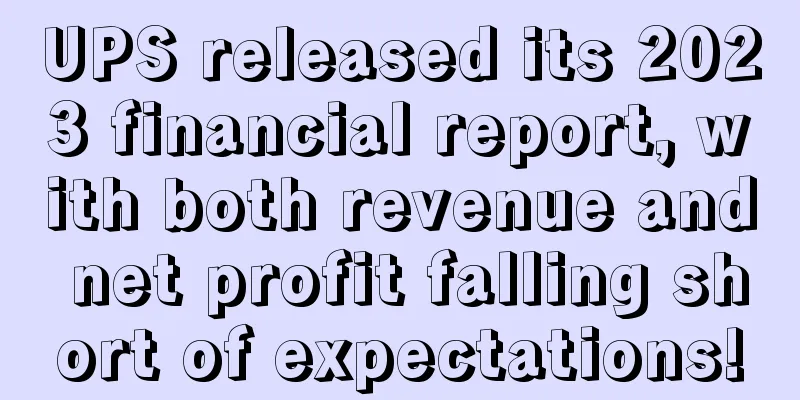The three biggest killers that affect account security:
1. Account association: A person or company can only have one Amazon account. This is where I think the easiest mistakes are made.
2. Illegal operations: Any behavior or operation that violates Amazon's sales policy will lead to store risks. This is all written in Amazon's rules, so I won't go into too much detail.
3. Seller performance indicators: If the performance target is not met, the store will be reviewed, frozen, and in serious cases, closed. This is briefly written.
1.1 Account association---close the store directly
1.1.1 Main factors of account association
1. Hardware factors: computer, network card MAC address, router, network cable
2. Software factors: browser fingerprints, COOKIES, email picture FLASH, product information, seller account similar information (credit card, email content, brand, sender, etc., store reserved number). Be sure to clean cookies and delete records regularly.
1.1.2 Account association--Notes on multi-account operation
1. Email content - ensure that each email template of each store is different and the signature is different. This is very important, especially for teams that request reviews, or for those who have standardized templates internally, and for those who operate several stores by one person. It is important to do it one-to-one, and do not send the template of store A to the template of store B. A colleague once made a similar mistake, which led to weak association between stores. When there are many weak associations, the stores are directly strongly associated.
2. Log in to the store email - try to ensure that you log in to the email in the store's own vps, one-to-one. Do not bind multiple store emails to Foxmail on the computer front desk to view and send emails. It is very likely to cause the problem of sending the wrong email!
3. Product duplication rate - especially for stores that follow each other's sales, special attention should be paid to the product duplication rate. The duplication rate cannot exceed 20%. If the product duplication rate is high, more other products should be added to reduce the overall product duplication rate. This is very important. Stores that often use small accounts to follow large accounts should pay attention to adding more self-delivery links. Don't be bothered by it. In order to avoid making mistakes, department leaders must check regularly to prevent colleagues from being lazy.
4. All kinds of web pages that require account login - such as Amazon buyer account, or tool software such as SellerSprite and Keepa; do not log in in the VPS, and all tools must not be logged in in the VPS.
5. Contact number for opening a case - You cannot leave the same mobile phone number in different stores. It is recommended to leave the mobile phone number used for secondary verification in each store. This is the point where mistakes are most likely to be made, and it must be emphasized in daily training.
6. It is forbidden to change the seller information in the background - it is best not to click it! Because once you click the edit page, even if you have not changed your information, you will be considered to have changed something if you click save. Especially for credit cards, it is particularly easy to trigger an audit.
1.1.3 Account association--Notes on VPS usage
1. You can only use VPS to log in to the store backend. It is prohibited to work, process files, browse the web, or download anything unrelated to the store backend on the VPS interface.
2. Clean up cache files in the VPS interface regularly every day, including any data reports, product labels, etc. downloaded from the store backend.
3. The local browser of your computer is prohibited from saving any store account and password.
4. VPS must not be left idle. Please log out in time after use to avoid occupying resources and affecting the Internet speed of other colleagues.
2.1 Store Performance-Main Factors
There is no need to waste time on this. If the return rate and other indicators are too high, the most effective way in a short period of time is to dilute the ratio. This is feasible through low prices, increased advertising, off-site promotion, and fake orders. This must be dealt with first, and then think about how to iterate and upgrade existing products.
2.2 Store Performance--Customer Service Performance--Buyer Feedback
Feedback related notes
1. Check the store's feedback in a timely manner, first thing in the morning and again after get off work;
2. When you find a negative review, you must first determine whether it can be deleted directly from the background; if it cannot be deleted, you must contact the customer in a timely manner to help him solve the problem, rather than directly guiding him to delete the negative review. You must deal with the customer's problem first unless you do not want to run this store for a long time; the content of the email should not directly involve risky words. Risky words can be replaced with other related words or added with other symbols.
3. If you try to contact the customer but fail, you can try to complain to Amazon. Just open a case and report to Amazon the communication situation and the relevant measures taken by Amazon, and request them to delete it again.
4. If the appeal is unsuccessful and the number of negative reviews is very obvious, Amazon will have to manually control the number of feedback and star ratings. You can find a service provider that can provide feedback, or contact reviewers (people who have purchased Amazon products) to ask them to leave five-star feedback for Amazon.
2.3 Store Performance -- Customer Service Performance -- A-to-Z Amazon Transaction Claims
It is mainly aimed at sellers who ship their own goods, or those who follow-sell their own links because the product is out of stock (generally, it is not recommended to follow-sell the shipping link if the product is out of stock. Although you can get orders, it is very likely to come to A2Z. And remember the promotion curve of the product. Although you can get orders, it is definitely not as good as before. Your curve shows a downward trend, which is not worth the loss). If the seller does not have many orders, you should be more careful. There may be a risk of the account being reviewed, frozen, or even closed due to the existence of one or two A-to-Z.
Here is mainly about how to deal with it:
The buyer must contact the seller before opening a claim. If the buyer is not satisfied with the seller's service and the problem is not resolved after communication, the buyer can open a claim for the following issues: 1) The item was not received 2) The item received does not match the description, such as the item is damaged, has quality problems, is partially missing, etc.
Under normal circumstances, buyers can open a claim within 90 days of purchasing the item. Under special circumstances, for orders that are more than 90 days but no longer than 6 months, buyers can also contact Amazon Customer Service, and Amazon will decide whether the buyer can open a claim;
Sellers need to follow up and reply on Amazon within 3 days after the claim is opened (not based on Beijing time);
For orders that have been refunded or chargebacked, buyers cannot open a claim again.
The seller wins (Amazon's decision does not affect the account rating), including the following statuses: Claim Closed, Claim Withdrawn
Buyer wins (Amazon's decision will affect the account rating), including the following statuses: Order Refunded, Claim Granted (Seller Funded)
2.3.6 Prohibited Behaviors When Handling ATZ
1. Direct refund saves trouble, because if you do this, it is equivalent to admitting that you sell fake products of poor quality, etc. Repeated operations will cause Amazon's suspicion. Try to cancel the processing or let Amazon not know the truth and pay for it themselves. No matter what the result is, at least it shows your attitude of actively cooperating with the processing, and you have also learned the experience of handling AZ.
2. The seller voluntarily refuses the claim (Claim Closed) or cancels the order (Order Canceled) without effective communication between the two parties. Doing so may result in the serious consequence of the store being closed.
3. If you contact the buyer or Amazon casually during the review of AZ, and your words are unclear or unreasonable, it may lead to the serious consequence of the store being closed.
2.3.7 Questions about AZ claims
1. Is there a time limit for customers to submit an A-TO-Z claim?
A: Buyers have 90 days from the estimated latest delivery date to file a claim. The longest delivery time is three days after (or 30 days after ordering) to 90 days after ordering.
2. A-to-Z buyer cancellation will also be counted into ODR, is it a new policy? It is said that the new policy in July is that only when the seller wins will it not be counted, and if it is the buyer who cancels, it will also be counted. Is this true?
Answer: If you want a refund, you must first let the customer cancel the order and then make a refund in the order. If you refund the full amount directly, the A-TO-Z will be automatically closed and it will be assumed that the seller is responsible.
3. This is my first time to encounter A TO Z. I foolishly agreed to pay compensation immediately. What should I do if the order defect rate exceeds 1%? Will my sales privileges be removed or my store weight be reduced?
Answer: If the ODR exceeds the standard seriously, Amazon will review the seller’s store and even remove the seller’s sales privileges. So the same method as handling the return rate should be used here to dilute your order defect rate.
4. After a full refund, will A TO Z automatically disappear?
Answer: A refund is equivalent to acknowledging that you have lost, and the background indicators will include this claim in the calculation.
2.4 Store Performance – Customer Service Performance – Credit Card Chargeback Claims
2.4.1 Solutions to credit card chargebacks
1. Initiate a refund immediately.
2. Report the seller’s situation to the credit card company through Amazon.
2.4.2 Notes
Sellers must respond to any credit card chargeback claims within 7 calendar days of receiving the email. Otherwise, Amazon may debit the seller's account for the transaction amount. Sellers are also required to respond to any other requests for information within the timeframe specified in the request.
2.5 Store Performance - Product Compliance - Main Factors
Amazon sellers need to maintain four types of intellectual property rights: copyright, trademark, utility patent and design patent.
Consequences of infringement:
1. If the owner of the copyright complains about it on Amazon, the product will usually be removed from the shelves directly. You will need to contact the owner of the copyright to withdraw the lawsuit or appeal to Amazon.
2. The property owner or legal agent files a lawsuit against Amazon. Once involved in a lawsuit, Amazon will directly freeze your funds. Everything is normal in the store, but you cannot get the money back.
(This situation is more serious than directly closing the store)
2.5.2 Product Compliance--Countermeasures for Product Infringement
Find out products or related listing information that infringe intellectual property laws and Amazon policies, such as invention patent infringement or trademark infringement.
Contact the IP owner and talk to them directly, they are usually easier to communicate with than a lawyer. If you can’t find the IP owner, contact the legal representative mentioned in the suspension notification email from Amazon.
Request that the IP owner or agent withdraw the complaint.
If the IP owner or their agent does not respond, contact an attorney for help.
If the seller can afford the cost of having their account suspended, they can wait until they have resolved the matter with the property owner before writing a specific improvement plan (POA).
Write a Plan of Action (POA) that includes the property owner's agreement to withdraw the complaint.
If the complaint is not withdrawn, provide Amazon with a detailed list of steps you and your attorney have taken to avoid future infringement or to prove the unreasonableness of the complaint.
Review quality management measures and train employees to identify products and listing types that are prone to infringement.
Remove or clean up all inventory products that have caused Amazon accounts to be suspended, as well as products that are prohibited from being sold on the platform. Once you decide to clear out a product, it basically means that you will lose money, it’s just a matter of how much, so the process must be fast. If you clear it out slowly, there may be another wave of complaints, resulting in greater losses. This principle also applies to daily clearance.
File an appeal with Amazon and take the above steps.
2.5.3 Product Compliance--How to Avoid Infringement Risks 1. For private label products
It is prohibited to allow other brands’ trademark content (including brand names, logo text and symbols) to appear in our listings;
Check for brand keywords or phrases in a trademark database, such as Justia Trademarks.
Before listing a private label product, make sure it is unique, even if it has been patented.
2. For purchasing from third parties
If possible, find out who owns the intellectual property and who is selling each product.
Ensure that all product information, including images, posted has the approval of the intellectual property owner.
Record item lists and invoices for each product and check them before listing.
Make sure the document you get is an invoice and not an order confirmation, pro forma invoice, commercial invoice, etc.
Research suppliers and their competitors, and avoid purchasing from wholesalers who cannot provide relevant documentation.
Here I can recommend a few useful websites for checking infringement. These two are both practical and free.
http://tmsearch.uspto.gov/
http://www.innojoy.com/search/index.html










